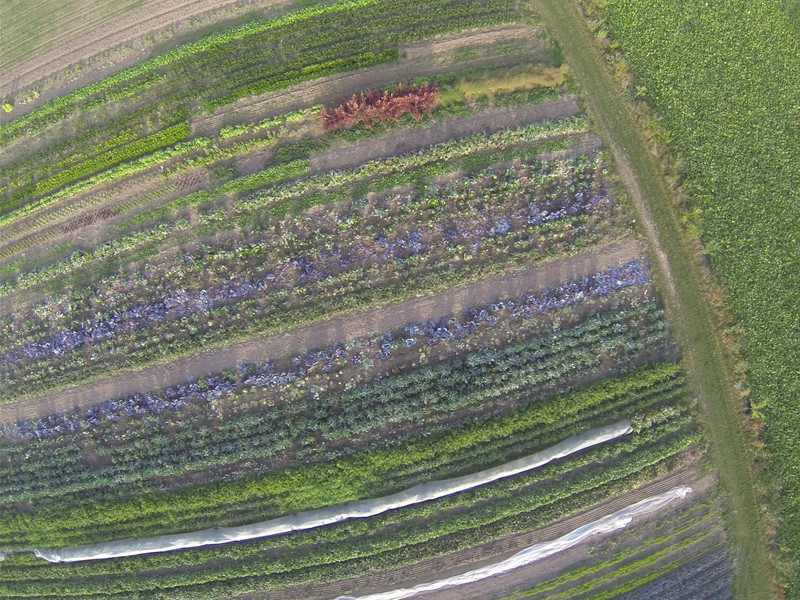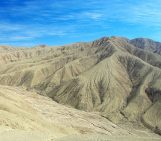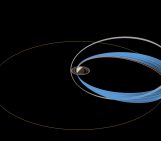This week’s Imaggeo on Mondays is brought to you by Kristof Van Oost, a scientist from the Georges Lemaître Centre for Earth and Climate Research (UCL) in Belgium. He tells us how local organic farms are being managed to ensure a lot of carbon stays in the soil…

An aerial photo of an organic farm, taken from a kite! (Credit: Kristof Van Oost, distributed via imaggeo.egu.eu)
This is a picture of the organic farm Het Open Veld in Leuven, Belgium. The farm is built around an alternative agriculture model in which food is grown and distributed locally – a concept known as Community Supported Agriculture (CSA). This means that about 200 people subscribe to CSA at the beginning of the year and pay a fixed sum of money to the farmer. The farmer does most of the work and when the fruit and vegetables are ready his clients come to the farm to harvest the produce themselves. Over 60 types of fruit and vegetable are grown on this farm, not to mention the cherry trees, sheep, chicken and bees! The farm is conveniently located at the border of the city of Leuven, so production takes place very close to the people who eat the food – and it’s organic, seasonal and ethically sound.
The farmer is interested in improving the quality of his soil, mainly through adding carbon. The organic farm is very patchy and several different types of vegetables are grown on small plots. The kite pictures provide detailed information on the type and location of vegetables. Later, this information will be linked to measurements of carbon on the ground to understand the effect of soil management on carbon storage (SOGLO Project, funded by BELSPO).
By Kristof Van Oost, Georges Lemaître Centre for Earth and Climate Research, UCL
The EGU’s open access geoscience image repository has a new and improved home at imaggeo.egu.eu! We’ve redesigned the website to give the database a more modern, image-based layout and have implemented a fully responsive page design. This means the new website adapts to the visitor’s screen size and looks good whether you’re using a smartphone, tablet or laptop.
Photos uploaded to Imaggeo are licensed under Creative Commons, meaning they can be used by scientists, the public, and even the press, provided the original author is credited. Further, you can now choose how you would like to licence your work. Users can also connect to Imaggeo through their social media accounts too! Find out more about the relaunch on the EGU website.


